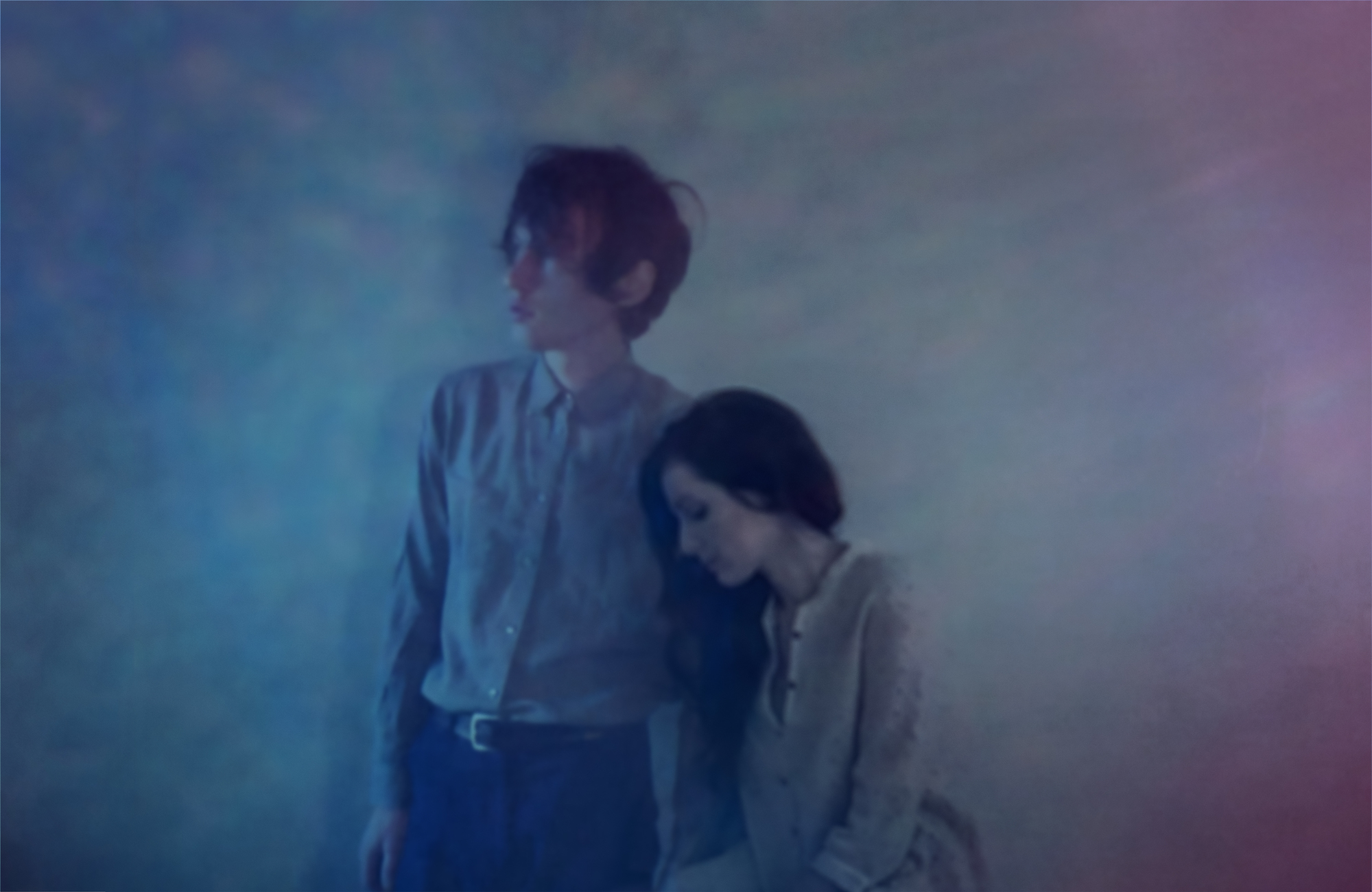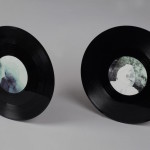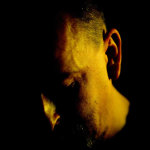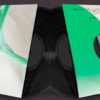Photo PHILISTINE DSGN
You can learn a lot about someone by simply asking what their twenties were like. That’s especially the case with Aleksa Palladino and Devon Church. The former couple spent those formative years strengthening their creative and personal bond with the widescreen band EXITMUSIC, only to find their paths diverge as the duo’s latest (and quite possibly, final) album took shape and songs like the shimmering ballad “Iowa” revealed the points in which they were pulled apart.
“We essentially essentially grew up together,” says Palladino, “but it became very clear that we needed to do it alone now. It was the hardest realization I’ve had in my life, but there was so much energy propelling me; it was almost elemental, like how the earth crashes into itself and forms mountains.”
In the following exclusive feature, the duo shares 20 of the most treasured influences from their twenties, along with a complete stream of The Recognitions, which hit shops through felte last month….
DEVON CHURCH
[youlist pid=”PLalq1u9Ka-Qr-V0gMFnl7vRrjVVAtiKh4″ width=”620″ height=”349″]
1. The Best of Leonard Cohen (Columbia, 1975)
My first LC record was this compilation, comprised of songs from his first three albums. It was a cassette copy from a second-hand music store in Winnipeg. In the black and white cover photo, he’s standing in a black suit, looking both sexy and spiritual, smoking a cigarette in front of a circular mirror, a white door left open behind him; it all seems terribly symbolic, somehow.
Along with Bob Dylan and Neil Young, Cohen was one of my first forays into ‘singer/songwriter’ music, after early obsessions with punk and alternative. I think Dylan and Lou Reed are probably the best songwriters of that generation in a more general sense, but there’s something about Leonard Cohen’s voice and lyrical sensibility that resonates with me on a whole other level. There’s this deep religious feeling in his music, which is soaked through with doubt and ambivalence and sensuality and depression, competing impulses which are ultimately resolved only by kneeling before beauty itself—the beauty of the world as it is, as ugly as it often appears.
2. Lift Your Skinny Fists Like Antennas to Heaven (Kranky, 2000)
So many so-called ‘post-rock’ bands from the late 90’s and early 2000’s made their mark on me—Spiritualized, Sigur Rós, Radiohead (starting with Kid A; I was never a big OK Computer guy)—but GYBE! has a special place in my heart. It’s amazing that a nine-piece anarchist musical collective from Montreal, who wrote 30-minute avant-punk/ambient-noise epics and never had a press photo taken of them, could become as popular as they did. I was obsessed, but somehow never caught a show until they came to Brooklyn this spring. They didn’t disappoint.
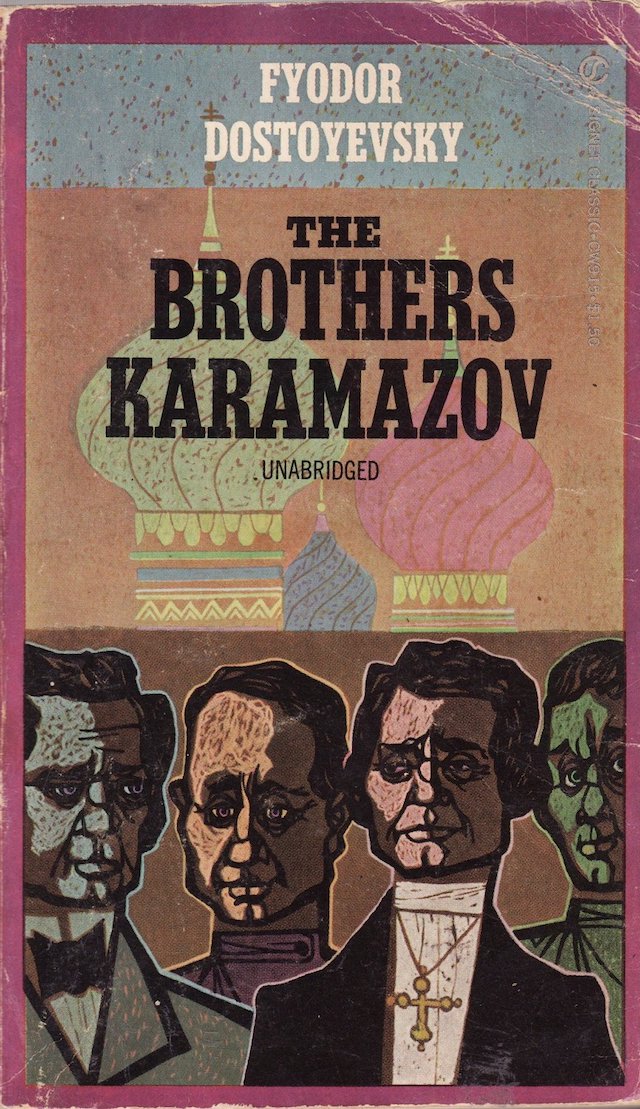
3. The Brothers Karamazov (1880)
I think people mistakenly believe this is a difficult book. It’s long, and there’s a lot of Russian patrynomics to remember, but it’s an immensely entertaining and rewarding read. I still haven’t found anything that blends so many different threads together in this harmonious, cacophonous way—god, crime, sexual obsession, revolution, family. Moments of total absurdity and sublimity bump up against each other. (Even the devil himself shows up, in a form at once unexpectedly comical and awful.) I’ve returned to this book many times in my life.
4. Mulholland Drive (2001)
Like a lot of art that’s left a lasting impression on me, my first response to David Lynch’s work was negative. When we first started playing out as EXITMUSIC, people would often point out what they thought was a Lynch influence. I didn’t even like him at the time. The Americana that Lynch used as a foil for ontological horror creeped me out a little too much. Even Elvis Presley and Marilyn Monroe creeped me out back then. I’ve always had a terror of pleasant, wholesome appearances that conceal an indistinct, dark force—something to do with my upbringing. But ever since I saw Mulholland Drive, Lynch’s work has been growing inside me like some kind of slowly uncoiling DNA strand. I often have dreams of meeting him for coffee.
[youlist pid=”PLE_Iexey-ITlvw9Kzzumc7YnSQLZfBIQq” width=”620″ height=”349″]
5. Third (Mercury, 2008)
I’ve always loved Portishead’s early records, but Third is the only one I still listen to regularly. It came out nine years after their self-titled second album, and it took a while for it to work its magic on me. I think it’s one of the best sounding recordings of the decade, and I refer to it as a sonic ideal when recording and mixing. I remember something Geoff Barrow said in an interview around the time of Third’s release about early dub-reggae producers, and how they used the recording studio and effects like delay and reverb as a way of getting closer to the divine. Which is curious because Barrow’s Twitter-personality seems pretty cynical and tongue in cheek. Still, I feel a similar spiritual impulse behind those Portishead recordings too.
https://youtu.be/T11JxsBn2tI
6. Smile
Around the time we recorded the first EXITMUSIC full length (The Decline of the West), we were listening to a bootleg CD of the Beach Boys’ original Smile record a lot. (Not the re-recorded version that was eventually released as a solo album by Brian Wilson.) It also had vocal and instrumental stems for every song. I learned so much from Wilson’s harmonies, arrangements, and production.
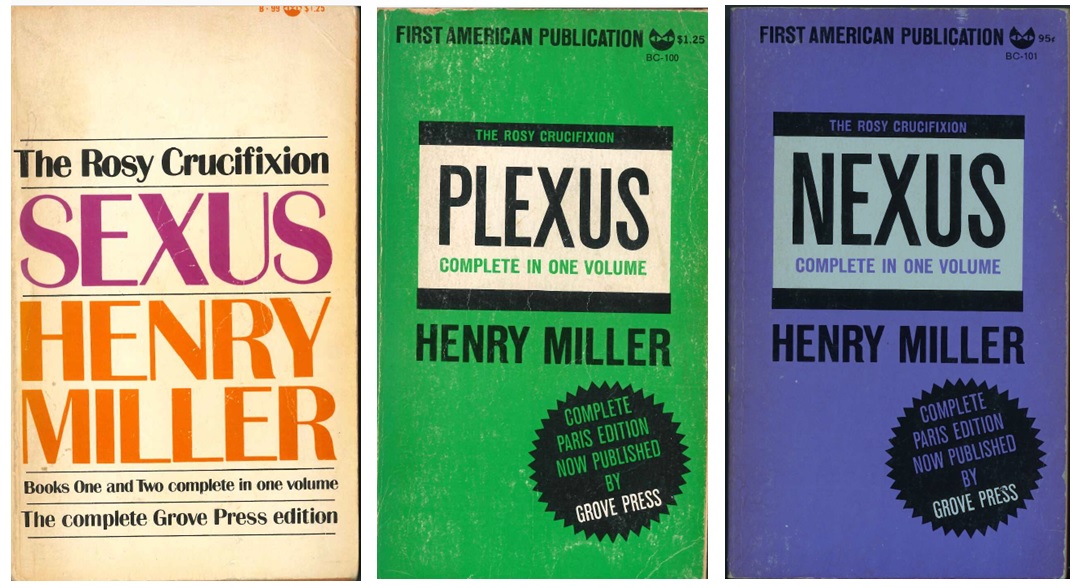
7. The Rosy Crucifixion Trilogy
I don’t know what to say about Henry Miller. I try to read him now and can’t quite seem to get the feeling I got while reading him in my late teens and early twenties. I suppose it’s the same with other early obsessions (the Beat writers, for example). But I was inspired enough by Miller and other writers of surrealist vagabondage (eg. Rimbaud) to leave Canada and skip university, in search of… well, in search of Something. I managed to circle the globe before winding up in New York at 22 and starting a life in music.
I don’t always have the same ecstatic bravado as Miller when it comes to facing life’s uncertainties (“I have no money, no resources, no hopes; I am the happiest man alive”), but I have no regrets either. The greatest gift of those early influences is a new way of seeing: “The moment one gives close attention to any thing, even a blade of grass, it becomes a mysterious, awesome, indescribably magnificent world in itself.”
8. The Velvet Undergound
Nothing to say about the Velvets that hasn’t been said before, but they remain, in my mind, as the single greatest band in modern recorded history.
9. The Lectures of Joseph Campbell
Aleksa and I used to have the collected lectures of Joseph Campbell on CD. His synthesis of world religion and mythology made a huge impression on me. I’ve always been a bit of a weird seeker. It’s something in my family’s church DNA (our name traces back to the Anabaptists, a sect of quasi-gnostic-anarchist-pacifist-Christian-protocommunists from the post-Luther period), but I’ve never settled on any particular path besides the one layed out by Campbell: “follow your bliss”.
10. Winnipeg
Winnipeg lies in the geographic dead-center of Canada and is the coldest city of more than 500,000 people in North America, the second coldest in the world after some place in Siberia. The summers are hot and infested by mosquitoes. It has the highest Indigenous population, per capita, of any North American city. It has a kernel of intellectual and creative energy, which is very singular (see Guy Maddin’s surrealist doc My Winnipeg), but it has terrible problems with poverty and crime (it’s the murder capital of Canada). It’s also kind of redneck and agrarian (both of my grandfathers were farmers) and at the same time weirdly Scandinavian (there was some improbable mass migration to Winnipeg from Iceland, which is alleged, according to experts in the field, to have resulted in a high incidence of ‘fairy’ sightings).
Having lived in New York and Los Angeles since I was 22, I’ve gradually come to realize that there’s something very particular about Winnipeg. I can’t put my finger on it exactly, but the city, and the surrounding geography (infinitely flat, vast prairies threatened by apocalyptic sunsets and thunderstorms, dense pine forests, ice cold lakes, naked veins of pink granite, quartz and amethyst) has a unique spirit of place. The name of the province, Manitoba, means ‘the place where the great spirit (Manitou) sits’. It’s a weird feeling to get sat on by Manitou.
ALEKSA PALLADINO
1. Sigur Rós
Can you remember the first time you heard Sigur Rós? I can. There is something in their sound that feels like ancient truth. I remember when I first heard “Svefn-g-englar”, it felt like a recovered memory from another life—a calling to remember what you’re made of and how far back that dates. I remember my friend Jenny Eliscu telling me that the first time she saw them play in New York, people were fainting. I got to see them tour this record a few times and I remember digging my bitten fingernails into the the arm rests of the seat; maybe I too was fighting to hold on.
2. The Bootleg Series Vol. 4: Bob Dylan Live 1966 (Columbia, 1998)
Some nights, when LA was still very new to us, Devon and I would just drive its surface streets listening to this album loud in the car. No destination, no conversation, just complete enthrallment of his voice, his words, and the passing blur of the palm trees and the strip mall lights at night.
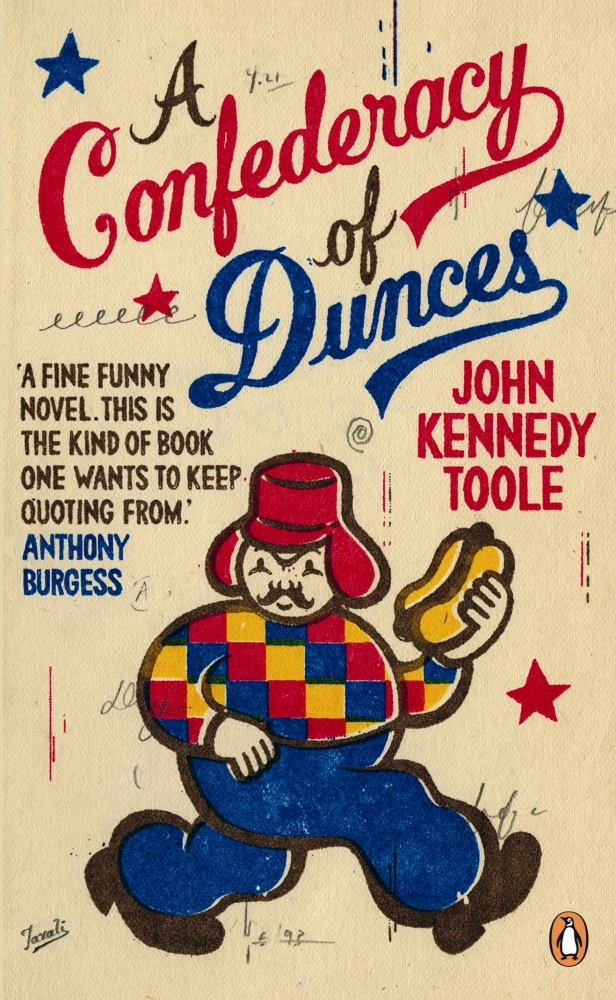
3. A Confederacy of Dunces (1980)
Genius book! Ignatius J Reilly became an alter ego for Devon and I. Many nights were spent responding to Craigslist ads in his voice. We’d start fights under his name on MySpace with revival baroque musicians, questioning the authenticity of their project. We’d respond to roommate ads and job applications. Ahh! That was FUN. A short-lived moment in time, but always with me.
4. Sidney Lumet
It must have been 2003 (the George W Bush years) when we first watched Network. It resonated for us so fully. We watched it over and over again. It was the summer time blockbuster in our house. Sidney Lumet quickly became one of my favorite directors. His work was always charged with a political and social consciousness that came through the underdog, the everyman, the small guy who stood up.
Towards the end of that summer I got a script to audition for and on the cover page it said FIND ME GUILTY, written and directed by Sidney Lumet. Holy shit, right? I put myself on tape, transferred it to VHS and mailed it to NY. Got the call a few days later that I got the job. I went on to work with Sidney again on Before the Devil Knows Your Dead. What a beautiful gift in my life. Whatever you love doing, you have to stick through the rough spells to get to the gifts.
5. Kid A (Capitol, 2000)
Was there a young musician in the 2000’s whom this album didn’t inspire? I don’t think so.
6. Ingmar Bergman
I should probably just put THE CRITERION COLLECTION, because for a few years in our early twenties, we ingested their entire catalogue. But, Bergman—the depth that emanates from his work. So rooted and heavy with symbolism and mythology. Pure poetry. Iconic composition. Really works of art.
7. Roberto Murolo
A folk singer who compiled and recorded Neapolitan songs dating back to the 14th century. The melodies are so visceral and ancient. I felt them in my blood right away. This music really fused my connection to my heritage and culture. Also one of the most beautiful voices and the way he infuses what he’s saying with emotion. Very inspiring to me in my work. And the classic tremolo guitar playing influenced my own playing a lot on Passage.
8. Federico Felinni
Such a brilliant filmmaker that marries surrealism with naturalism. Again, it seems my twenties was a big moment for me in aligning with my Italian blood. It had been something I fought as a child, just wanting to fit in, but it came back to me vibrantly later on..
9. Andrei Tarkovsky
The pace and the scope of his visuals influenced EXITMUSIC a lot in terms of textures, landscapes, and scale. How every shot seemed to be damp with small trickling sounds of water.
10. Los Angeles
Los Angeles itself was very inspiring to me in my twenties. We had moved from New York and it was my first time living off a grid system. LA was so mysterious with its winding verdant hills and noir-ish history. Its abandoned theaters and boarded up mansions. Its long standing history of religious cults and communes. I’ve considered myself an amateur historian and loved researching places that catch my eye. What was this building built for originally? What used to be here? What’s the story?
We walked LA a lot. (I still have yet to learn to drive.) I like walking; it’s the right pace to observe. It’s the right pace to wonder.
